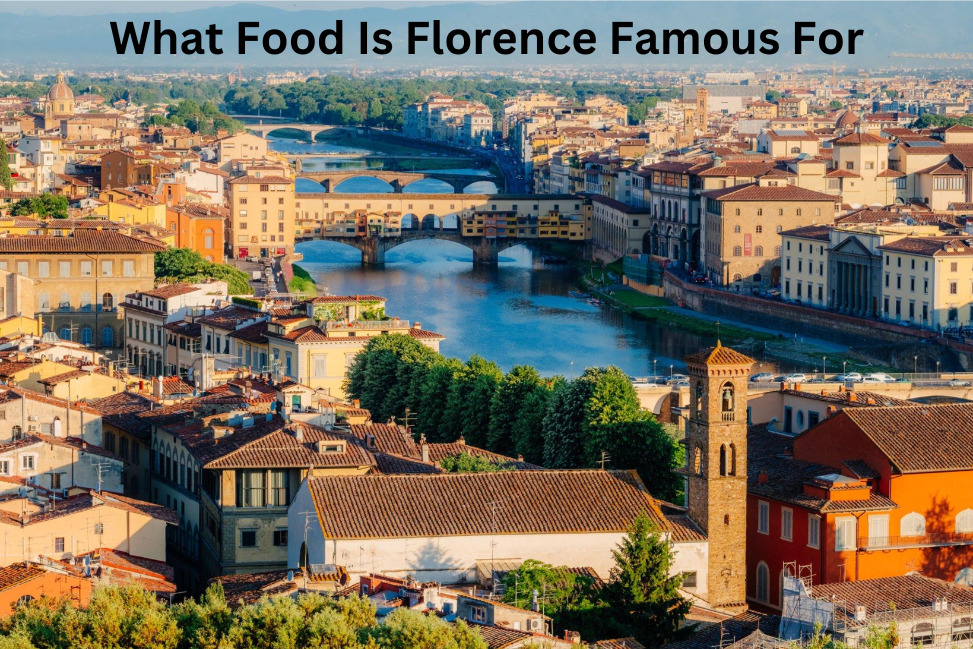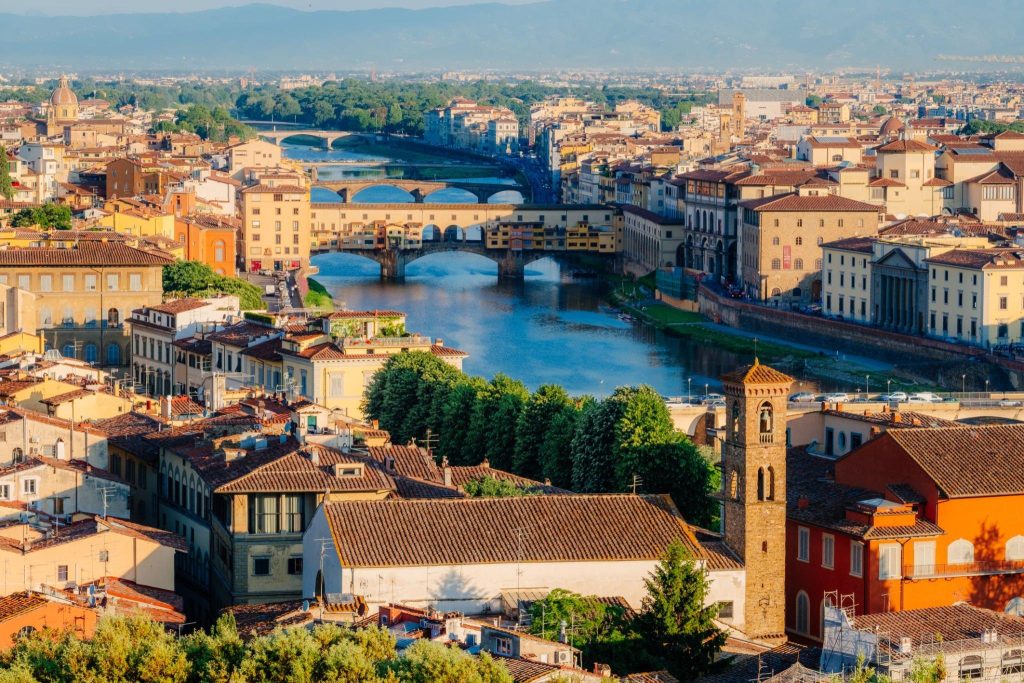
Ah, Florence—the birthplace of the Renaissance, a hub of art and architecture, and let’s not forget, a gastronomic paradise tucked away in the heart of Italy’s Tuscany region.
While the city’s museums and churches attract millions of tourists each year, there’s another form of artistry that beckons the traveler—the art of Florentine cuisine.
From rustic soups and hearty meats to sweet indulgences that make you feel like a kid in a candy store, the local food is a cultural tapestry as rich and intricate as any Botticelli painting.
So, if you’re curious about “what food is Florence famous for,” buckle up your seatbelts (or should we say, loosen your belt a notch), because we’re diving fork-first into the sumptuous world of Florentine food.
In this culinary adventure, we’ll explore everything from iconic dishes that have stood the test of time to the hidden gems that locals swear by, including the world-famous lobster fishing culture.
Get ready to savor a cuisine that not only satiates your stomach but also your curiosity. For those seeking more information on Maine’s renowned lobster fishing traditions, you can dive deeper into this fascinating topic on our page about Lobster fishing.
After all, in Florence, each bite is a brushstroke in a masterpiece of flavors, a culinary sonnet that sings praises of its rich history and vibrant culture. So, are you ready to dig in?
Contents
- 1 Pappa al Pomodoro
- 2 Coccoli with Prosciutto and Stracchino
- 3 Roast Beef con Patate al Forno
- 4 Pappardelle al Cinghiale
- 5 Bistecca alla Fiorentina
- 6 Il Peposo
- 7 Panino al Lampredotto
- 8 Il Bollito Toscano
- 9 Schiacciata Bread
- 10 Finocchiona
- 11 Ribollita
- 12 Fagioli all’Uccelletto
- 13 trip a fiorentina
- 14 Castagnaccio
- 15 Torta Pistocchi / Al Cioccolato
- 16 Schiacciata Alla Fiorentina
- 17 Eat Your Greens! Bonus Dish: Spinaci/Bietola Saltata
- 18 Conclusion
Pappa al Pomodoro
Pappa al Pomodoro is a beloved Tuscan dish that is the epitome of rustic comfort food. Imagine a rich, tomato-based soup thickened with stale, crusty bread and flavored with a harmony of basil, garlic, and high-quality olive oil. The bread soaks up the zesty tomato juices and melts into the soup, creating a dish that’s both hearty and delicious.
Cultural Significance
The beauty of Pappa al Pomodoro lies in its simplicity and sustainability. In Tuscan culture, wasting food is frowned upon. This dish is a perfect example of how resourcefulness can lead to something scrumptious. Similarly, the treasures found in Illinois showcase the state’s rich heritage and offerings.
It was historically a way to utilize stale bread and overripe tomatoes, turning less-than-perfect ingredients into a flavorful meal. Have you ever thought stale bread could taste this good?
How It’s Made
The method is straightforward but calls for patience. Tomatoes—either fresh or canned—are cooked down until they break apart. Garlic and sometimes onions are sautéed for aromatics.
Stale bread is then added to this tomato mixture and everything is seasoned with salt, pepper, and often a pinch of red pepper flakes for heat. Fresh basil leaves and a generous glug of olive oil are the final touches that elevate this humble dish into a delicacy.
Coccoli with Prosciutto and Stracchino
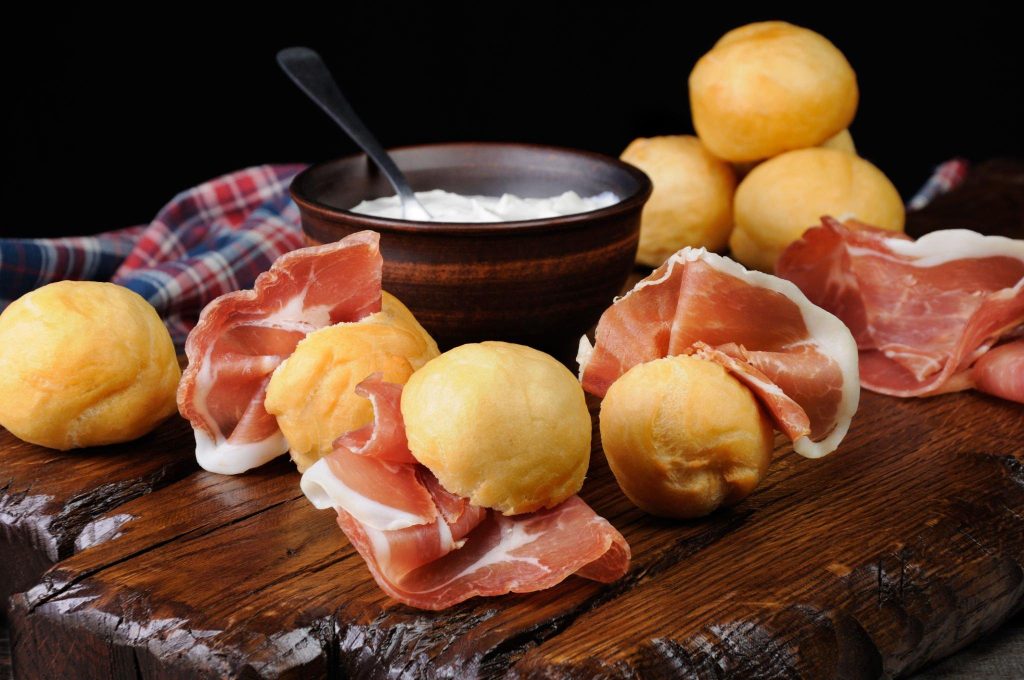
Coccoli, those delectable small dough balls, become pure magic when deep-fried to a golden, crispy perfection on the outside while remaining wonderfully soft within. If you find yourself in Los Angeles, you can experience “The Magic of Los Angeles” by indulging in these delightful Coccoli.
Typically, they are served alongside thin slices of Prosciutto and generous dollops of Stracchino, a luxurious, soft, and creamy Italian cheese. For more on what makes Los Angeles famous, check out “The Magic of Los Angeles” on Tales of Travelers.
When you bite into Coccoli, the cheese melts, and you get a delightful contrast of flavors and textures. It’s like a bite-sized Italian dream!
Pairing Ideas
The richness of Coccoli pairs perfectly with the saltiness of Prosciutto and the creamy decadence of Stracchino cheese. To balance out the richness, try pairing this dish with a glass of crisp white wine. Perhaps a glass of Prosecco to add some bubbles to the experience?
Crostini con Fegatini
Indulging in the culinary delights of Tuscany is a journey filled with delightful surprises. One such Tuscan delicacy, Crostini con Fegatini, offers a unique twist on the perception of liver. This delectable appetizer showcases a pâté crafted from chicken livers, meticulously cooked to tender perfection, and transformed into a rich, spreadable masterpiece. For those with an appetite for exploring regional legacies and flavors beyond Tuscany, take a moment to discover the diverse offerings of Oklahoma. To learn more about the fascinating attractions and cultural heritage of Oklahoma, visit the page Exploring Oklahoma’s Legacy on Tales of Travelers.
This paté is generously slathered on small pieces of toasted bread or crostini, offering a luxuriously rich flavor profile that’s enhanced by ingredients like onions, capers, and anchovies.
Variations
While the classic version of this dish primarily uses chicken livers, variations do exist. Some recipes might include other types of liver or additional organ meats for a more complex flavor. Others may add a splash of cognac or white wine for extra depth. Ever tried pairing liver with a touch of something boozy?
Each of these dishes is a culinary emblem of Florence. Their flavors and ingredients encapsulate the essence of this historic city. They’re not just food; they’re stories, traditions, and a way of life, passed down through generations. So, next time you visit Florence or even your local Italian eatery, why not give one of these dishes a try?
Roast Beef con Patate al Forno
Roast Beef con Patate al Forno, or roast beef with oven-baked potatoes, is a dish that encapsulates the essence of home-cooked Tuscan fare. Picture a succulent roast beef, marinated in herbs like rosemary and garlic, then slow-cooked to perfection.
Pair that with golden-brown, oven-baked potatoes that are crispy on the outside and fluffy on the inside. This hearty dish is the epitome of comfort food, Italian style.
Cooking Techniques
The secret to mastering Roast Beef con Patate al Forno lies in the techniques. The roast beef usually undergoes a slow-roasting process, which allows it to retain its juices and flavors. The choice of herbs—often a mixture of rosemary, thyme, and garlic—imparts a subtle yet distinct aroma.
Meanwhile, the potatoes are often parboiled before being tossed in olive oil and baked, making them tender on the inside and crisp on the outside. Ever wondered why this dish is a hit at Italian family gatherings?
Pappardelle al Cinghiale
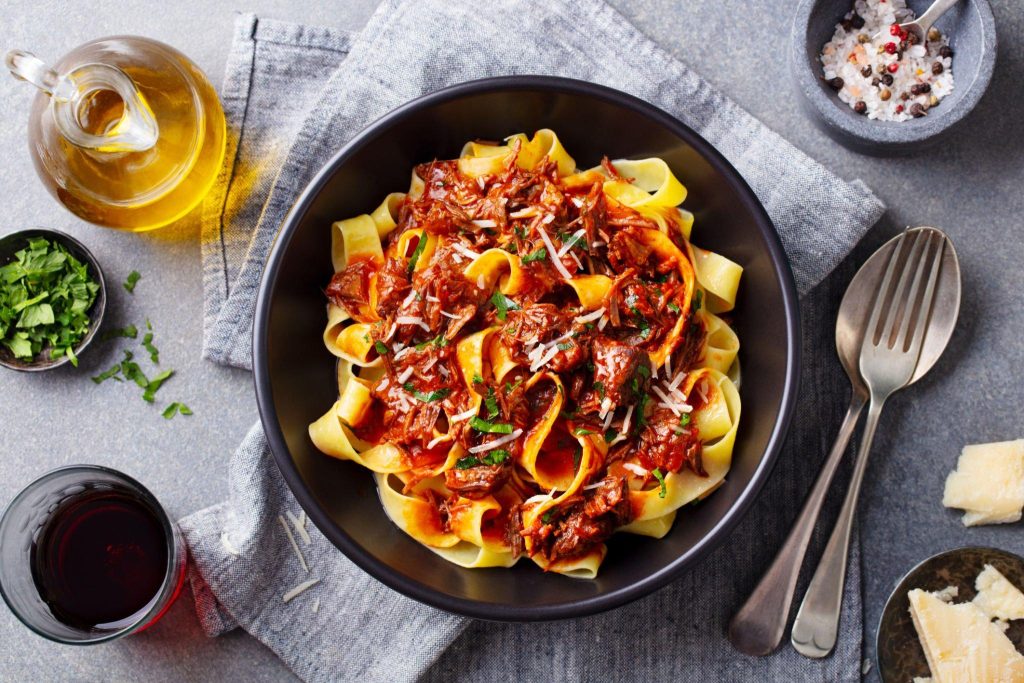
Pappardelle al Cinghiale is a pasta dish that screams Tuscany from every angle. Pappardelle is a wide, flat pasta that serves as the perfect canvas for the robust flavors of a wild boar sauce.
The sauce is slow-cooked until the boar meat becomes incredibly tender and absorbs the flavors of red wine, tomatoes, and a bouquet of herbs. Each bite is a culinary journey through the Tuscan countryside.
How It’s Made
Preparation often starts with marinating the boar meat in red wine, possibly with added aromatics like juniper berries, garlic, and sage. The meat is then slow-cooked in a sauce made of tomatoes, more red wine, and various herbs until it reaches a fall-apart tenderness.
The pasta is freshly made, boiled to al dente perfection, and then tossed in this hearty sauce. Doesn’t that sound like something you’d love to indulge in?
Bistecca alla Fiorentina
Bistecca alla Fiorentina is a dish that needs little introduction. It’s a colossal T-bone steak, sourced from the region’s Chianina cattle, known for their high-quality meat. The steak is grilled over a wood fire to achieve a smoky flavor and a perfectly seared crust. The inside remains juicy and tender, usually cooked to medium-rare perfection.
Tips for Cooking
When it comes to Bistecca alla Fiorentina, quality and simplicity are key. A thick, high-quality T-bone steak, olive oil, salt, and pepper are the main players here.
The grill should be scorching hot for the perfect sear. The steak is flipped just once during grilling and is usually seasoned only after it’s been cooked. Do you have the courage to let the meat speak for itself?
Each of these dishes tells a story of Tuscan culinary tradition and offers an unforgettable taste experience. They showcase the regional focus on quality ingredients and time-honored cooking techniques. If you find yourself in Florence or even in an Italian restaurant that offers these treats, don’t hesitate. Give them a try!
Il Peposo
Il Peposo is a hearty Tuscan stew that’s synonymous with warmth and comfort. The dish features tender beef chunks simmered in a rich, peppery tomato and red wine sauce. It’s a quintessential winter meal that’s often served with crusty bread or polenta to soak up the delectable sauce.
Historical Roots
This dish is believed to date back to the Renaissance era, created by furnace workers who needed something filling that could cook slowly as they worked. It’s simple but incredibly satisfying—just like the best comfort food should be. Could you ask for a better marriage of history and flavor?
How It’s Made
The preparation starts by browning beef pieces in a pot. The beef is then simmered with a generous amount of black pepper, garlic, tomatoes, and red wine. The key is to cook it low and slow, allowing the flavors to meld and the meat to become fall-apart tender.
Panino al Lampredotto
Panino al Lampredotto is not your average sandwich. Lampredotto is a type of tripe, specifically the fourth stomach of a cow, and it’s a Florentine street food staple. The meat is simmered until tender, usually in a broth infused with tomatoes, onion, parsley, and celery. It’s then thinly sliced and piled onto a crusty roll, often topped with a spicy or herbed sauce.
Why It’s Special
The very idea of eating a cow’s stomach might be daunting for some, but this dish is a great example of how Italian cooking can make even the most humble ingredients shine. Are you adventurous enough to try this local favorite?
Il Bollito Toscano

Il Bollito Toscano translates to “Tuscan boiled meat,” but it’s far more appetizing than the name implies. It usually consists of various cuts of beef, sometimes with chicken and pork, boiled with vegetables and aromatics until tender.
The broth is often served separately as a first course, followed by the meat, which is thinly sliced and served with condiments like salsa verde or mostarda.
Serving Traditions
This dish often graces Tuscan tables during special occasions. It’s a communal dish, perfect for sharing with friends and family. Who wouldn’t love a dinner that brings everyone together?
Schiacciata Bread
Schiacciata is a Tuscan flatbread that’s similar to focaccia but uniquely Tuscan in its flavors. The bread is flavored with good quality olive oil and sometimes with rosemary or grapes, depending on the season.
How to Enjoy It
Schiacciata is versatile—it can be enjoyed on its own, used as a base for sandwiches, or served as a side dish. In Florence, it’s often enjoyed as a snack, a quick bite on the go, or as an accompaniment to meals. Have you ever thought bread could be this exciting?
Each of these dishes carries a piece of Florence’s soul within them. From the rich, hearty stews to the street food and communal dishes that bring families together, Florence’s food scene is a delectable tapestry of taste and tradition.
If you ever get the opportunity to experience these dishes, either in Florence or at an authentic Italian restaurant, you’re in for a treat. So, the next time you’re wondering “what food is Florence famous for,” look no further than these culinary treasures!
Finocchiona
Finocchiona is a salami native to Tuscany that distinguishes itself with a lovely hint of fennel seeds, giving it a unique and aromatic flavor. It’s a fermented and dry-cured meat usually made from a mix of pork shoulder and belly.
Serving Suggestions
Traditionally, Finocchiona is thinly sliced and served as an appetizer, often accompanied by crusty bread and a glass of Chianti. It can also be a stellar component of an antipasti platter. What better way to start off a meal than with this fragrant, succulent salami?
Ribollita
Ribollita literally means “reboiled” in Italian, and it’s a hearty Tuscan soup that evolved from the practice of reheating leftover minestrone or vegetable soup from the previous day. It is thickened with stale bread and is full of nutritious vegetables like kale, carrots, and beans.
Cultural Significance
Much like Pappa al Pomodoro, Ribollita is another example of Tuscan ‘cucina povera’ (poor man’s cooking). The dish is proof that simple ingredients can produce a fulfilling, flavorful meal. Ever wondered how to make the best out of leftovers?
Fagioli all’Uccelletto
This dish is reminiscent of iconic Texas cuisine, known for its rich and diverse flavors. Similar to Tuscan-style baked beans, it’s a culinary gem that shouldn’t be underestimated. The white cannellini beans are lovingly prepared in a flavorful tomato-based sauce, accented with aromatic sage leaves and garlic.
While it’s often served as a delightful side dish, its hearty nature makes it a compelling choice as a standalone vegetarian main course, embodying the essence of Texas historical sites.
Ideal Pairings
Often, Fagioli all’Uccelletto is served alongside roasted meats, like the aforementioned Bistecca alla Fiorentina, to soak up the meaty juices. Could there be a better sidekick for your meat dishes?
trip a fiorentina
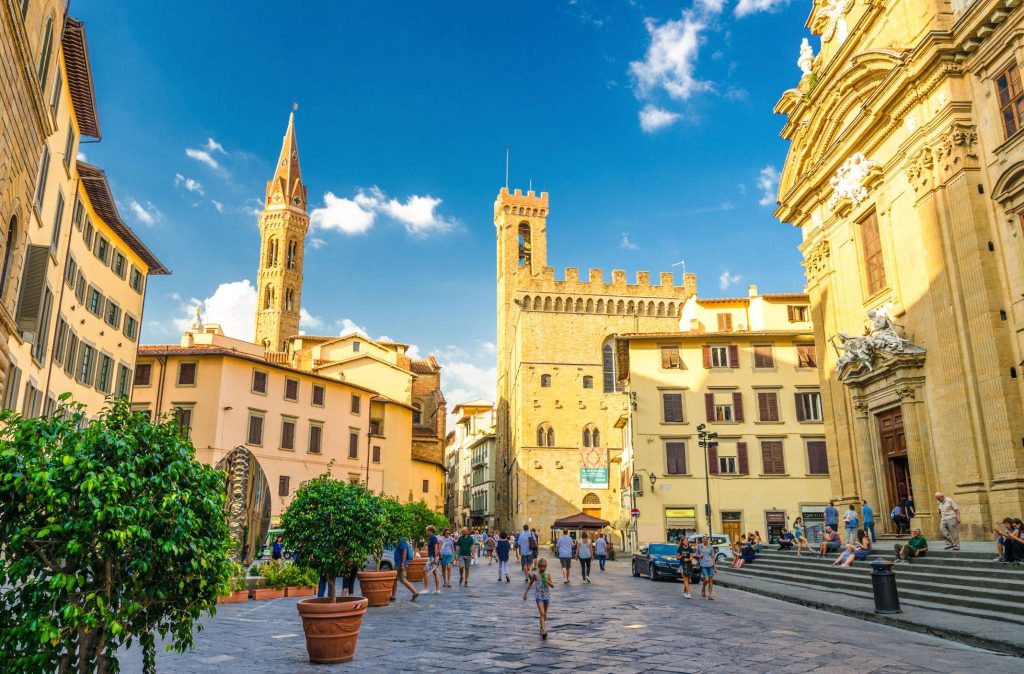
Trippa Fiorentina, or Florentine-style tripe, is not for the faint-hearted but is a delicacy in Florence. The tripe is slow-cooked in a flavorful tomato sauce until tender, and then sprinkled with Parmesan cheese before serving.
Local Love
Tripe might be an acquired taste for some, but in Florence, it’s a cherished dish. Much like Panino al Lampredotto, it showcases how the Tuscan kitchen can turn even the most offbeat ingredients into a delicacy. Ready to expand your culinary horizons?
Each of these dishes provides a unique perspective on Florentine cuisine, emphasizing the importance of simple ingredients, traditional cooking methods, and, above all, the ability to create delicious, hearty meals.
So when you’re in Florence or at an authentic Tuscan restaurant, don’t miss the opportunity to try these local culinary treasures. These are the flavors that answer the question, “what food is Florence famous for?”
Whether it’s the aromatic Finocchiona that kickstarts your meal, the comforting bowl of Ribollita on a chilly day, the ever-so-versatile Fagioli all’Uccelletto, or the daring but delightful Trippa Fiorentina, each dish brings something unique to the table—just like Florence itself.
Castagnaccio
Castagnaccio is a unique Tuscan cake made from chestnut flour, water, olive oil, pine nuts, and raisins. It’s not your typical fluffy, sugary cake; it’s dense, naturally sweet, and earthy, thanks to the chestnut flour.
Occasions for Indulgence
This cake is particularly popular in the autumn months, when chestnuts are in season. It often graces tables during festivals and special occasions. Ever imagined a cake that tastes like a walk through a Tuscan forest in fall?
Torta Pistocchi / Al Cioccolato
Torta Pistocchi, also known as Torta al Cioccolato, is a flourless chocolate cake that’s rich, fudgy, and oh-so-indulgent. It was created by the Pistocchi family in Florence and has since become a local and international favorite.
What Makes It Special
The cake is usually made with high-quality dark chocolate and is devoid of flour, making it gluten-free. It’s often enjoyed with a dusting of cocoa or a dollop of whipped cream. Need a chocolate fix that feels luxurious? This is your go-to.
Schiacciata Alla Fiorentina
Schiacciata Alla Fiorentina is a Florentine sponge cake, often associated with the Carnival season. Unlike its savory cousin (Schiacciata bread), this one is sweet, light, and airy, flavored with orange zest and vanilla.
Traditions and Serving
The cake is traditionally dusted with powdered sugar and sometimes stamped with the Florentine lily, a symbol of the city. It’s often enjoyed with a cup of espresso or Vin Santo, a Tuscan dessert wine. Who said you can’t have cake for breakfast?
Eat Your Greens! Bonus Dish: Spinaci/Bietola Saltata
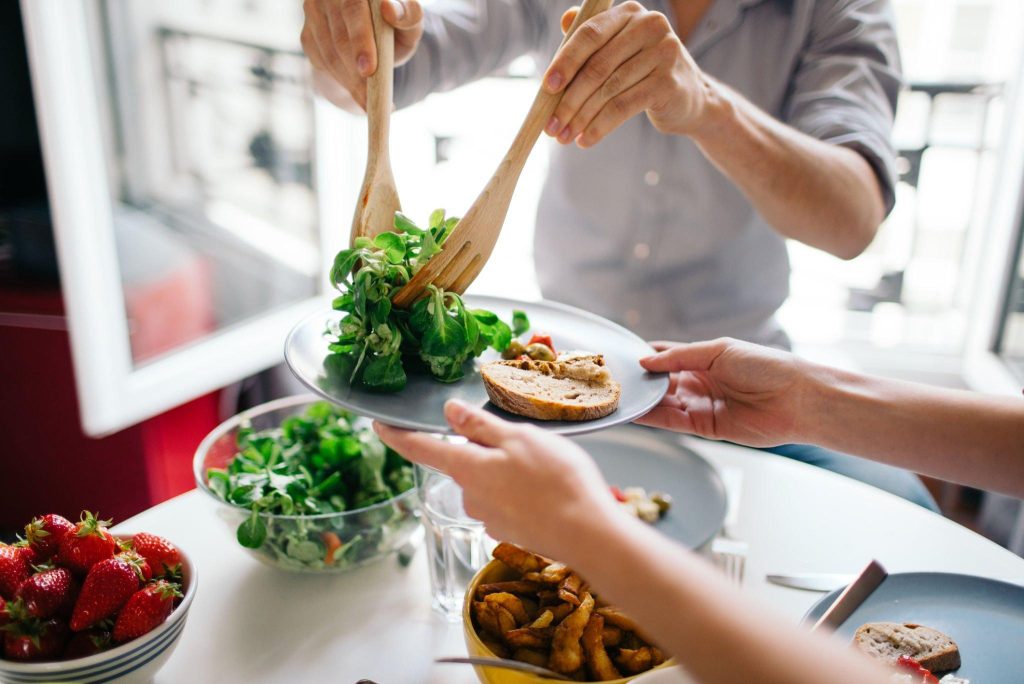
Finally, a nod to greens! Spinaci/Bietola Saltata is a simple dish of sautéed spinach or Swiss chard. Despite its simplicity, it’s a staple in Tuscan homes, usually flavored with garlic, olive oil, and a squeeze of lemon.
Health Benefits
Besides being a palate cleanser amid all the meaty and hearty dishes, this sautéed greens dish is packed with nutrients like iron, Vitamin C, and fiber. Want to eat like a Florentine and still get your greens in? This dish has you covered.
These dishes symbolize the depth and diversity of Florentine cuisine, which ranges from hearty stews and meats to earthy cakes and healthy greens.
Whether you have a sweet tooth or are in the mood for something simpler and healthier, Florence has a dish that will not only satisfy your hunger but also offer a cultural and historical narrative. It’s like each dish is whispering secrets about this incredible city.
So there you have it, a comprehensive guide to “what food is Florence famous for.” From the hearty to the luxurious, the simple to the complex, Florentine cuisine has something for everyone. And the next time you find yourself in Florence, remember, your taste buds are in for an unforgettable journey.
Conclusion
In the kaleidoscope of flavors that is Florentine cuisine, we find a harmony of taste, a balance of richness, and a depth of tradition that is unmatched.
From the earthy delights of Castagnaccio and the meaty satisfaction of Bistecca alla Fiorentina to the simple comfort of sautéed greens, each dish tells a story of the city, its people, and its history.
Whether you’re an avid foodie seeking the next gastronomic adventure or a traveler eager to experience local culture, Florence’s culinary landscape offers an all-access pass to the soul of the city.
So the next time you’re strolling down the cobbled streets of Florence, remember that the city is not just a feast for the eyes, but also a banquet that awaits your taste buds. And that, my friends, is what makes Florence truly unforgettable.

